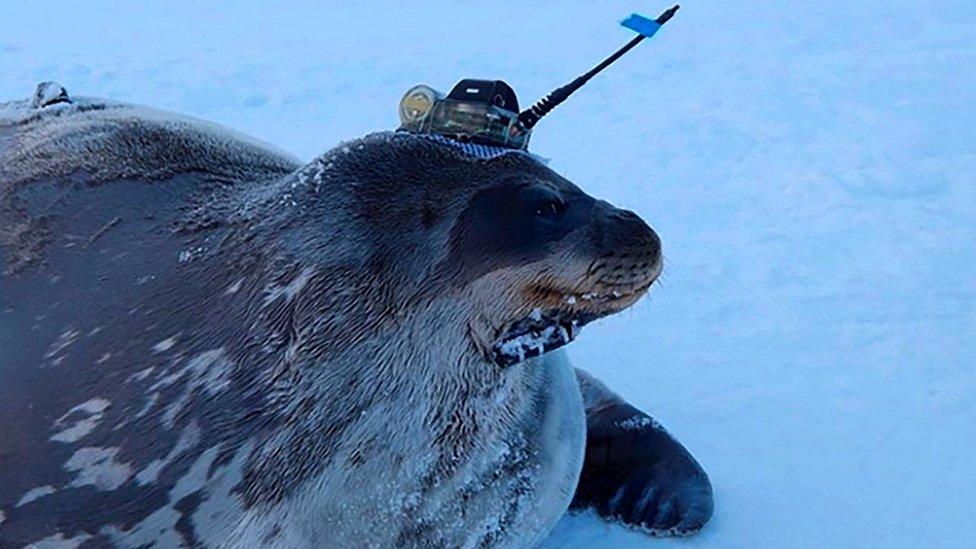Seals with helmets help collect data under Antarctic ice
- Published
- comments

A Weddell seal fitted with high-tech head-mounted measuring devices to survey waters under the thick ice sheet, near Japan's Showa Station in Antarctica
Helmet-wearing seals have been helping Japanese scientists collect information from the waters under Antarctic ice.
Eight Weddell seals, each with a special device on their heads fitted with sensors, were used to gather information such as water temperatures.
The Weddell seal is a type of seal that lives in the area around Antarctica. It was discovered and named in the 1820s during expeditions led by British captain James Weddell.
The creatures were part of a research project between March and November 2017, which is winter time in Antarctica.
Project leader Nobuo Kokubun said the research helps scientists follow the seals behaviour in areas with extremely harsh conditions.
"During the summer, we can go to Antarctica on icebreakers to conduct actual research activities, so that we can collect data there. But during the winter, such things cannot be done in so many places," Kokubun told the Reuters news agency.
"However, even in such a situation, many animals such as seals are living in the area of Antarctica, so I thought we should have them collect the data," he added.
The information gathered showed one of the seals had travelled as far as 633km (393 miles) from the coast of Japan's Showa Station in Antarctica.
Another seal had dived to a depth of 700m (2,297 feet) during the research.
Mr Kokubun next hopes to make the device small enough to fit on other animals at the South Pole such as penguins.
The aim will be to look at the impact of climate change on Antarctic coastal areas,
"The advantage with penguins is that they come back to the same place and we can collect the data from them immediately. Also, we can use the devices on a large number of penguins so they can cover a wide area," he said.
What do you think of the idea? Let us know in the comments.
- Published20 January 2020
- Published8 June 2022
- Published18 July 2018
